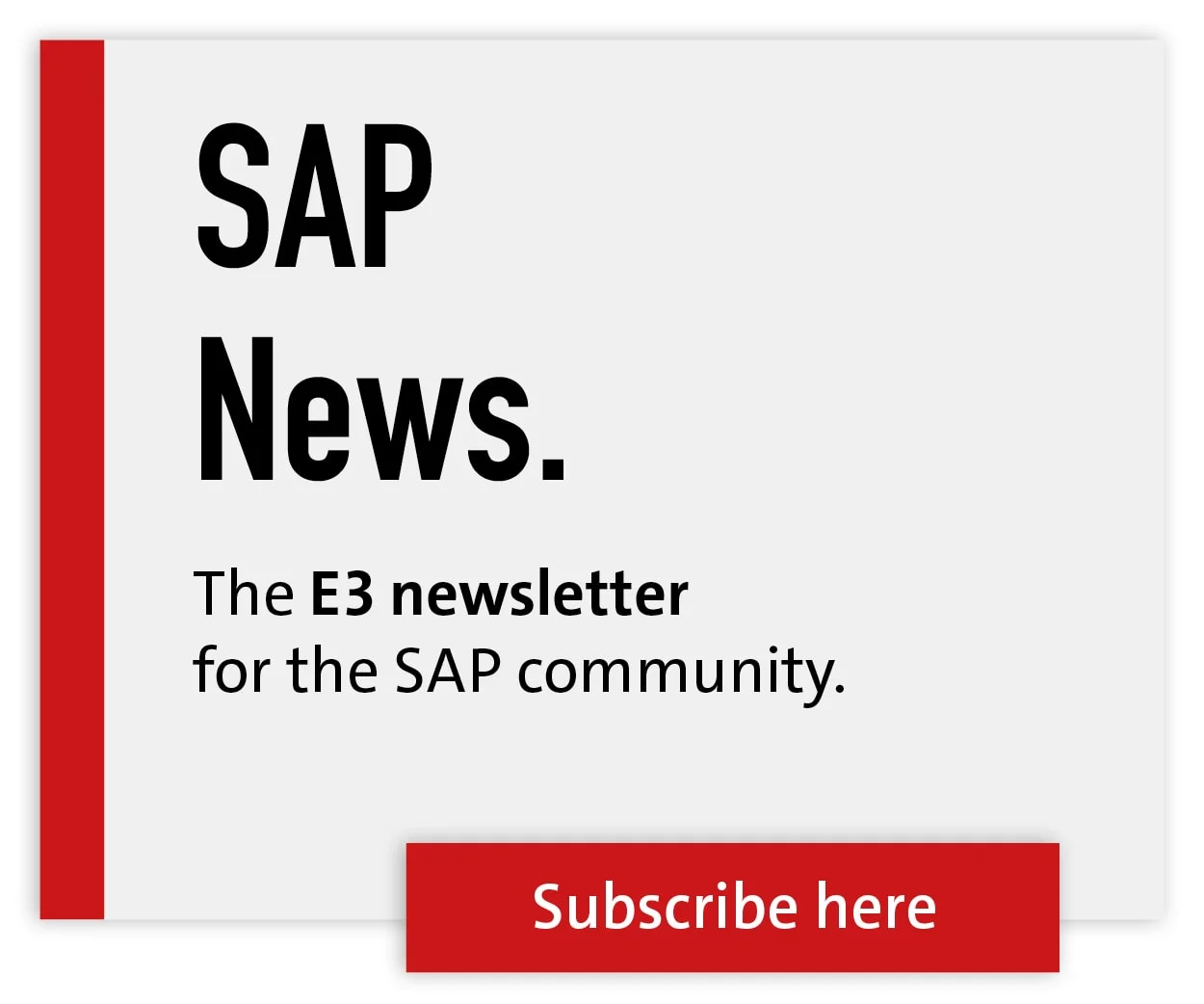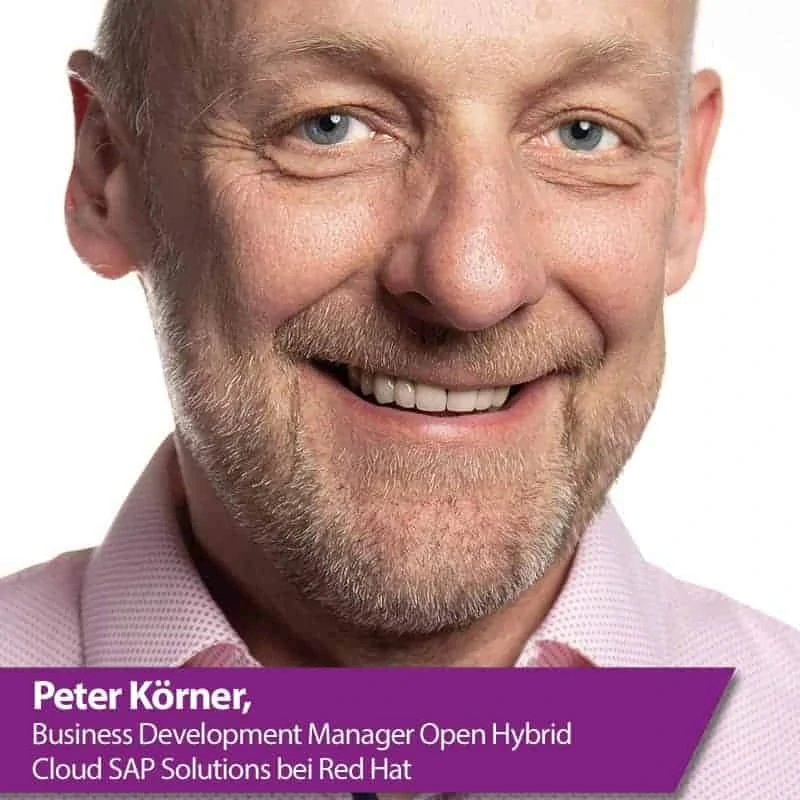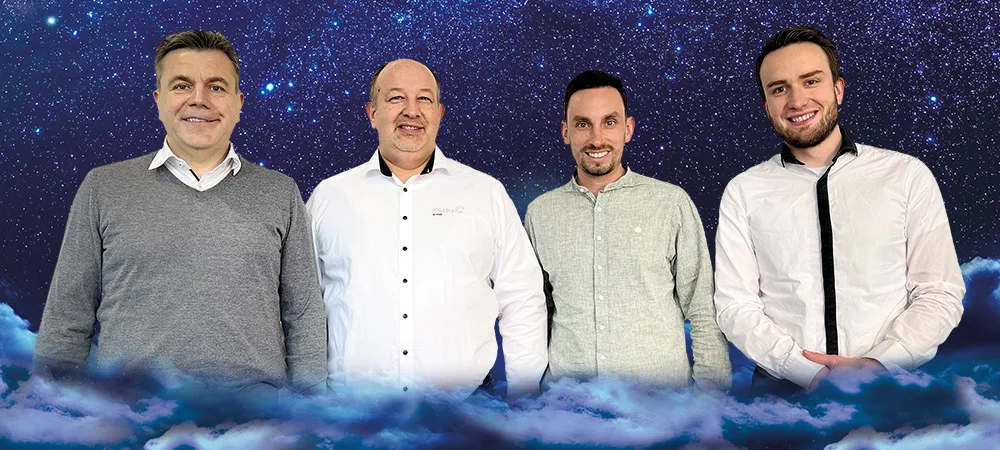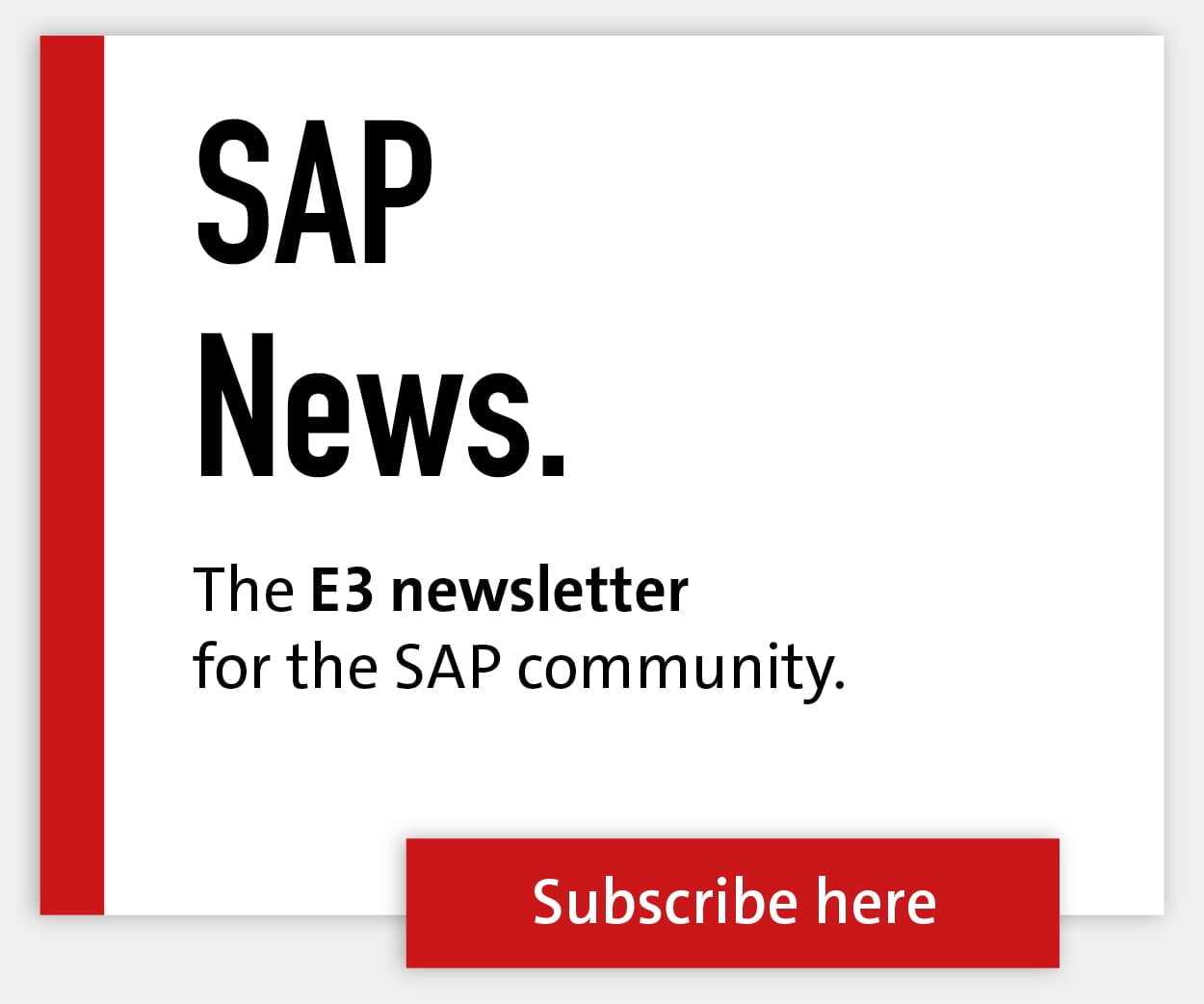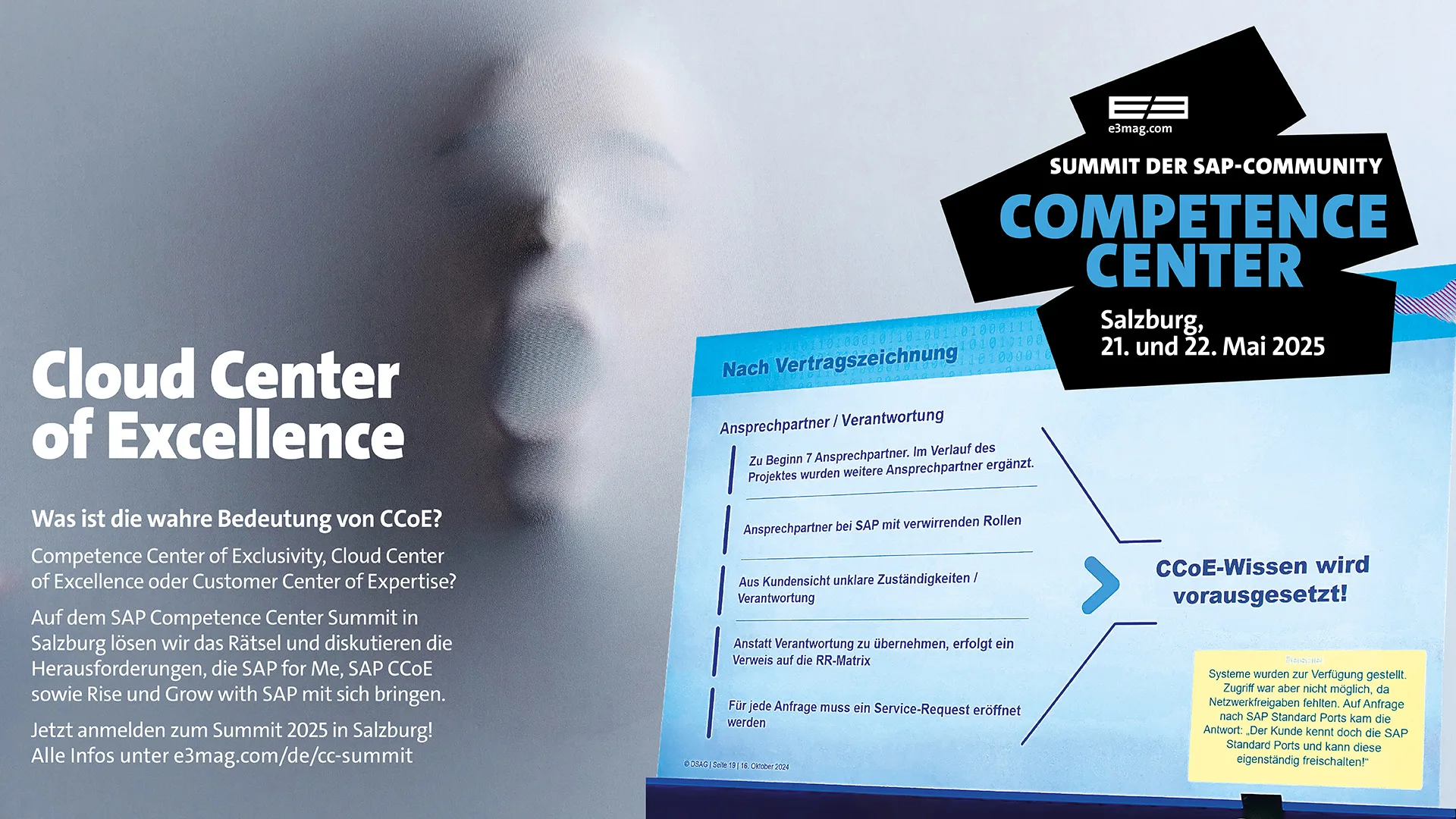The Goal Is Digital Excellence


All steps in the migration to S/4 or Hana are closely linked to decisions on IT infrastructure and new hybrid architectures. When it comes to the latest generation of products, SAP is increasingly building upon open source technologies such as Linux for Hana and Kubernetes for SAP Data Hub. Here, companies have to ask themselves which open source partner, such as Suse or Red Hat, can best support them during the process of rolling out open source solutions in their IT departments.
2025 may seem far off, but for companies that date is rapidly approaching. As it now stands, they may not have the necessary developers for the task, and unforeseen delays are more the rule than the exception when it comes to large-scale IT projects.
Along with that, many companies are likely to find out as part of a strategic reorientation that IT structures have become increasingly complex and opaque, especially in recent years. Where necessary, they were updated and upgraded in many sub-areas, but they are no longer as future-proof due to the increasing number of implemented solutions.
Digital transformation
The other challenge that will affect all businesses in the coming years is the digital transformation. This process, which has been the topic of much discussion for years, involves a variety of new issues that all companies must take into account in the medium term if they want to remain competitive. These include artificial intelligence and machine learning or data-driven processes that, for example, make it possible to better understand the needs of customers.
These include artificial intelligence and machine learning or data-driven processes that enable a better understanding of customer needs, for example, and other important topics include Industry 4.0, IoT, RPA, blockchain and virtual and augmented reality. These modern applications are now being developed on a cloud-native basis.
One such solution entails the abstraction of the infrastructure achieved by adding an extra layer. This is built on Red Hat OpenShift, an enterprise Kubernetes platform that allows for unified, cloud-native application development on any infrastructure, and a hybrid multi-cloud mix that includes on-premise deployments.
It is precisely these features that make the open hybrid cloud infrastructure ideal for use for SAP integration. SAP customers will permanently retain freedom of choice regarding their platform.
Legacy IT vs. innovation
A major challenge for companies, especially large ones with legacy IT systems that developed over many years, is how to connect the SAP world on one hand with innovative new solutions on the other and how to integrate them.
For many years, Red Hat has been able to offer solutions that go far beyond an enterprise Linux system and support the integration of many different applications. This delivers useful synergies for companies that represent significant added value.
One example of this is the Ansible project, an automation language and a framework for organizing and managing IT environments. After its acquisition by Red Hat, Ansible is now one of the world’s largest open source projects. It is a powerful tool that helps companies and, more importantly, partners achieve much higher efficiency when carrying out installations.
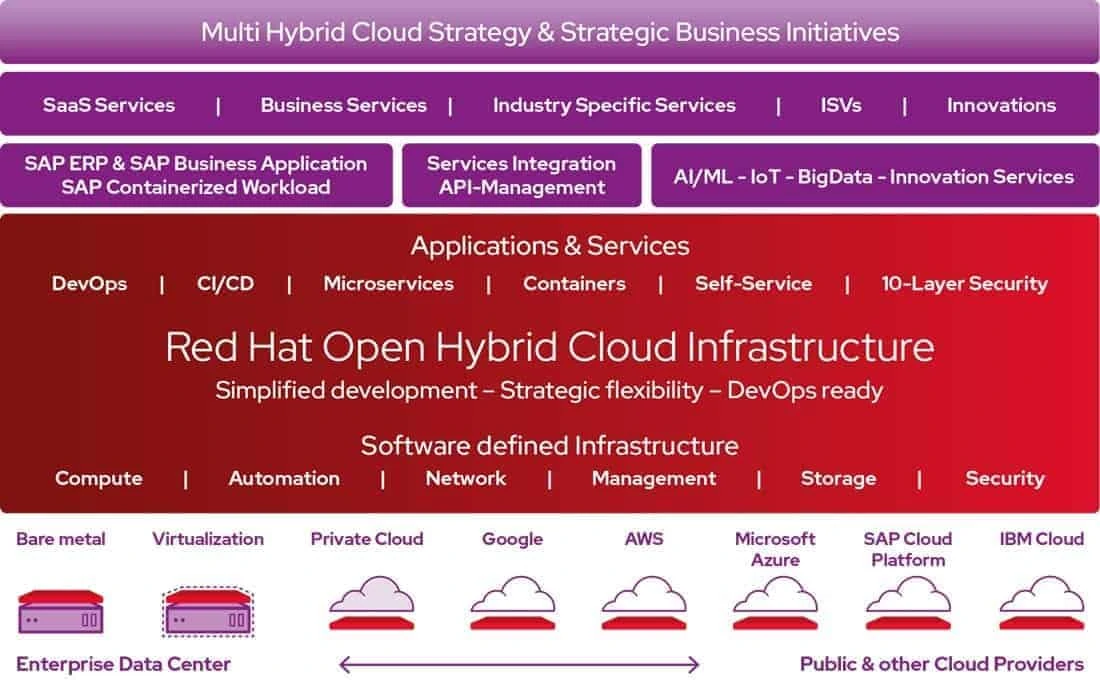
SAP and Open Source
In addition, Red Hat solutions are gaining in prominence because SAP has been focusing increasingly on open source solutions for some time and relies, for instance, on container-based workload strategies. For example, SAP is actively involved in the development of open source projects that are suitable for business use and based on open standards.
Like other software vendors, SAP leverages the potential for innovation that open source offers and has developed the Hana and SAP Vora in-memory databases using technologies such as Linux and containers.
If a company is looking to containerize its services and use Kubernetes clusters by SAP, there is no way around the Red Hat OpenShift Kubernetes container platform, which is certified for SAP Data Hub. SAP users are increasingly asking for OpenShift as the basic tool for processing the SAP workload.
Ansible Automation and OpenShift
Ansible and OpenShift also help demonstrate Red Hat’s special position in the SAP ecosystem. Red Hat is not only a technology provider for consumers but also an important service provider for SAP partners. With Red Hat’s support, partners can offer additional services to their customers. For example, an SAP partner that performs Hana migrations can benefit from working with Red Hat in innovative fields like AI, machine learning, IoT, big data, and blockchain.
Consumers and partners receive the frameworks and methods as well as individual building blocks and applications that put them in a position to offer new services and cover innovative new topics. Through the combination of simple, integrated development, Red Hat creates flexibility in terms of IT strategy and a modern IT culture that delivers added value for companies. Red Hat’s global open hybrid cloud strategy is aligned with SAP’s company orientation and with that of IBM, representing the ecosystem of all partners.
The solutions that Red Hat provides to its customers are all based on the fundamental idea of deep integration. They address the common problem of IT and data silos. As part of its service package, Red Hat offers companies fit-to-strategy solutions and technologies.
Because S/4 is based on a different database technology, migrating applications is complex and difficult. The question therefore is whether to develop new applications or customize existing ones in view of the IT structures that developed around the SAP infrastructure over the years at many companies.
Public Cloud and Shadow IT
Migrating applications is complicated because S/4 is based on a different database technology. So what is to be done: Develop new applications or adapt them? This question arises in many companies in view of the IT structures around the SAP infrastructure that have grown over the years.
This issue is partly overcome through the use of SaaS solutions, in which case companies often resort to popular public cloud solutions that lead to a shadow IT developing.
Management has often tolerated this because certain cloud solutions, such as test environments or redundancies for peaks, could not or still cannot be mapped from existing IT systems. The problem here is that the IT silos created as a result prevent companies from disrupting and innovating, not to mention from using cloud services to upgrade and make their IT infrastructure flexible.
In Red Hat’s view, integration can help ensure that different systems are connected, and it also acts to eliminate media transfer problems. Still, if you were to ask IT managers at companies, they would say there are numerous processes that are not as automated as they could be.
What is needed to overcome the existing silos within companies is a uniform and modern technical foundation that helps link all existing applications and services.
Open APIs form the basis for interconnecting data, applications, and devices and play a key role here. Red Hat’s concept of side-by-side extensibility combines SAP data, processes, and UIs with state-of-the-art programming environments, CI/CD, and DevOps based on Red Hat OpenShift in a uniform, scalable way on any infrastructure.
Open Hybrid Cloud
Data is commonly referred to as the “new oil,” and data-driven processes will help companies make better decisions on the basis of IT intelligence in the future. Solutions can be developed and scaled globally on an open hybrid cloud infrastructure, which, depending on the data available, are behavior-based and support high-performance automated customization of services by means of artificial intelligence and machine learning methods. This requires that operational and experience data is not only collected but also consolidated, most importantly in real time using data from SAP instances.
In the future, maximum flexibility will be required in the execution and design of services. In addition to traditional on-premise operation in data centers, modern containerization will make it possible to outsource applications to the public or private cloud or to transfer them to hybrid operation. In such cases, companies benefit from the flexibility to add resources automatically, at the push of a button and based on set rules. Flexibility is absolutely essential here, especially in view of the current, actual customer challenges.
Based on Red Hat’s general assessment and experience, 70 percent of companies’ IT expenditure relate to traditional workloads; 20 percent to brownfield projects such as migration and modernization, for example, via containerization; and 10 percent to innovations such as cloud-native developments. Red Hat is one of the few select companies with more than 25 years of experience in all three areas.
One thing that is also clear is that most SAP users will operate a hybrid cloud in the coming years. They will migrate some of the current applications from SAP as a SaaS, while the other apps will be migrated to S/4.
This inevitably increases complexity, and for that reason, selecting the correct tool sets for providing end-to-end services in hybrid environments is particularly important. Here, too, there is no way around open source-based platforms.
Together: SAP, Red Hat and IBM
The trend towards hybrid cloud is unstoppable, and Red Hat, SAP and IBM, representative of all Red Hat partners, have joined up to pursue a common strategy. In terms of methods and technologies, it is based on Red Hat’s open source solutions and many years of experience in supporting and modernizing traditional workloads. The key is to take a broader approach that includes application services and infrastructures of any type.
While the advantages of open source are now well-known, it should also be clear that simply saying it is “free” would be selling the software short. Users cannot use all the features available with open source software just like that; this requires appropriate administration and customizing.
There are also several patches and add-ons every year in the Linux environment that have to be installed and customized, a task that Red Hat performs as an experienced partner for companies as part of end-to-end patch management. For example, the company runs a service that manages its infrastructure components; monitors all critical alerts globally; and delivers or recommends the appropriate patches accordingly. Thousands of Red Hat Enterprise Linux hardware, software, and security certifications also apply without restriction for use as the basis for an SAP platform.
Kubernetes:
How companies solve the new challenge
Kubernetes is one of the most important topics of the future. But many executives have yet to come to terms with the thought patterns behind it; after all, Kubernetes use also affects mission-critical applications.
Red Hat, for example, has published a white paper on the specific challenges of container security that is available for free download (Ten Layers of Container Security).
Red Hat Innovation Lab:
Get to know DevOps and agility
For many large corporations, a DevOps corporate culture can lead to a real culture shock, because the old familiar development philosophy seems ill-suited to it.
Therefore, Red Hat has created a new project form with the Open Innovation Labs, which goes far beyond a classic chemistry meeting at the beginning of the project:
This is an offer in which a concrete use case is extracted from a project task and in which concrete results are developed for the commissioning company over the course of six to twelve weeks.
In this way, Red Hat imparts the know-how and strategies that a company needs for independent project implementation. The customer should be enabled to implement complex solutions themselves using agile methods (Scrum, Design Thinking, etc.).
Professionals and managers who want to get to grips with DevOps, the combination of development and operations, and find out how they can prepare their team for this innovative form of work, can find out more at https://www.redhat.com/de/topics/devops#? numerous videos and further information.
